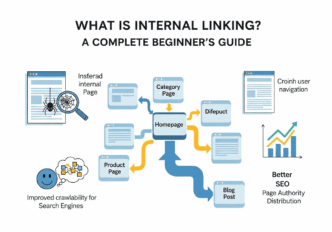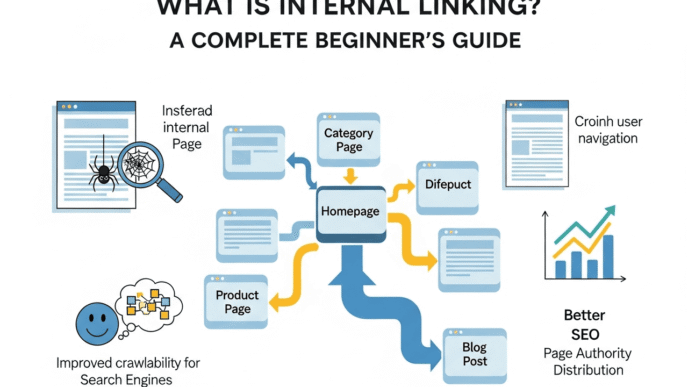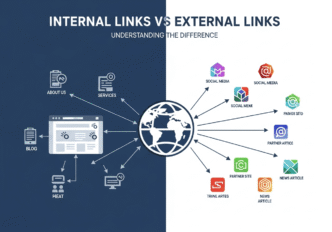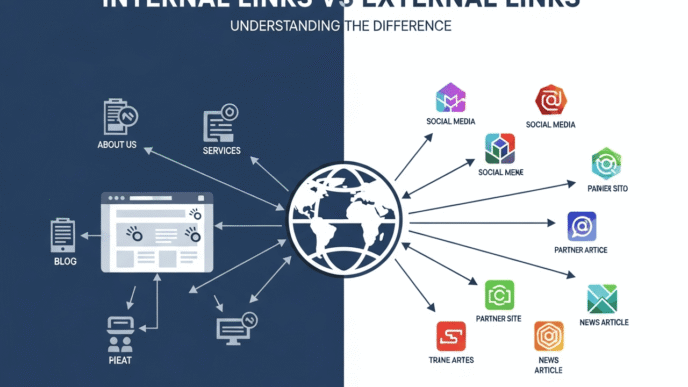Picture this: You’ve just spent three months optimizing your website for what you thought was the perfect keyword. Your content is brilliant, your on-page SEO is flawless, but your rankings? Nowhere to be found.
Welcome to the club of SEOs who learned the hard way that keyword difficulty analysis isn’t just a nice-to-have—it’s the difference between ranking on page one and disappearing into the digital abyss. If you’ve ever wondered why your carefully chosen keywords aren’t performing, you’re about to discover the truth that most SEO courses conveniently skip.
Table of Contents
Toggle
What Exactly Is Keyword Difficulty Analysis?
Keyword difficulty analysis is the process of evaluating how hard it would be to rank for a specific keyword on search engine results pages (SERPs). Think of it as your SEO crystal ball—except this one actually works.
At its core, keyword difficulty takes into account several factors:
- Domain authority of competing websites
- Content quality and depth of existing results
- Backlink profiles of top-ranking pages
- Search intent alignment
But here’s where most people mess up: they think keyword difficulty is just a number. It’s not. It’s a strategic decision that should guide your entire content strategy.
How Do SEO Tools Calculate Keyword Difficulty Scores?
Ever wondered why Ahrefs shows a difficulty of 45 while SEMrush says 62 for the same keyword? It’s not a bug—it’s because each tool has its own secret sauce.
Ahrefs focuses heavily on the backlink profiles of the top 10 results. Their keyword difficulty metric essentially asks: “How many backlinks would you need to compete?”
SEMrush takes a broader approach, considering:
- Organic competition level
- SERP features present
- Historical ranking data
Moz throws domain authority into the mix more heavily than others.
Pro Tip: “Never rely on a single tool’s keyword difficulty score. I always cross-reference at least two tools before making any strategic decisions.” – Neil Patel
Why Do 90% of SEOs Get Keyword Selection Wrong?
The statistics are sobering. Most SEO professionals consistently choose keywords that either:
- Are too competitive for their domain authority
- Don’t align with actual business goals
- Have misleading difficulty scores
The biggest culprits? Vanity metrics and keyword difficulty misinterpretation.
The Vanity Metrics Trap
Many SEOs get seduced by high search volume numbers. They see “digital marketing” with 200K monthly searches and think they’ve struck gold. But with a keyword difficulty of 95+, you’d need the authority of HubSpot or Moz to even dream of ranking.
The Context Ignorance Problem
Long-tail keywords often show lower difficulty scores, but context matters. “Best CRM software for small business 2024” might have a difficulty of 30, but if the top results are all from major SaaS review sites, good luck breaking in.
What Makes a Keyword Actually Difficult to Rank For?
Let’s break down the real factors that make keywords challenging:
Domain Authority Gaps
When the top 10 results all have domain authorities above 70, and you’re sitting at 25, you’re not just climbing a hill—you’re scaling Everest.
SERP Features Domination
If featured snippets, knowledge panels, and local pack results dominate the SERP, organic spots become premium real estate.
Content Depth Requirements
Some keywords demand comprehensive, 5,000+ word guides. If you’re planning a 500-word blog post, you’re already outgunned.
| Keyword Type | Typical Content Length | Competition Level | Success Strategy |
|---|---|---|---|
| Commercial Intent | 1,500-3,000 words | High | Focus on user experience |
| Informational Keywords | 2,500-5,000 words | Medium-High | Comprehensive coverage |
| Long-tail Specific | 800-1,500 words | Low-Medium | Direct, actionable answers |
How to Conduct Proper Keyword Difficulty Analysis
Here’s the step-by-step process that actually works:
Step 1: Gather Multiple Data Points
Don’t trust a single keyword research tool. Use at least two:
- Ahrefs for backlink analysis
- SEMrush for competition overview
- Google Keyword Planner for search volume validation
Step 2: Manual SERP Analysis
This is where the magic happens. Look at the top 10 results and ask:
- What’s the average word count?
- How many referring domains do they have?
- Are these established brands or smaller players?
Step 3: Content Gap Analysis
Identify what existing content is missing. Sometimes a keyword looks difficult, but there’s a content angle nobody has covered.
Pro Tip: “I’ve seen websites with DA 15 outrank DA 60+ sites simply because they answered the searcher’s question better. Don’t let domain authority intimidate you from creating superior content.” – Brian Dean
Should You Always Avoid High-Difficulty Keywords?
Short answer: Not always.
High-difficulty keywords can be part of a long-term strategy. Here’s when to consider them:
When You Have Supporting Content
If you’ve built authority around related low-competition keywords, you might be ready for bigger challenges.
When Your Content Is Genuinely Superior
Sometimes the existing top results are outdated or incomplete. If you can create something significantly better, search engines will notice.
For Brand Building
Ranking for industry terms, even if it takes two years, can establish your brand as an authority.
Which Keywords Should You Target Instead?
The sweet spot lies in medium-difficulty keywords with clear commercial intent. Here’s your targeting strategy:
The 30-50 Difficulty Range
These keywords offer the best risk-to-reward ratio for most websites:
- Enough search volume to matter
- Competition you can realistically beat
- Room for content optimization
Long-Tail Variations with Intent
Instead of “email marketing software,” try:
- “email marketing software for ecommerce stores”
- “best email marketing tools under $50″
- “email marketing automation platforms comparison”
Real-World Case Study: From Failure to Success
Let me share a real example from a client in the fitness niche.
The Mistake: They initially targeted “weight loss” (difficulty: 89, volume: 550K). After six months, they ranked on page 47.
The Pivot: We shifted to “weight loss meal prep for busy professionals” (difficulty: 28, volume: 8.9K).
The Results:
- Ranked #3 within 4 months
- Generated 15K+ organic visitors monthly
- Converted at 3.2% (compared to industry average of 1.8%)
The lesson? Sometimes less is more.
Expert Tips for Keyword Difficulty Assessment
Look Beyond the Numbers
Keyword difficulty scores are guides, not gospel. Always supplement with:
- Manual competitor analysis
- SERP volatility checks
- Historical ranking data
Consider Seasonal Factors
Some keywords have fluctuating difficulty based on seasonality. “Tax software” spikes in difficulty from January to April.
Factor in User Experience
Google’s algorithm increasingly rewards sites that provide better user experiences. Page speed, mobile optimization, and content structure can give you an edge.
| Assessment Factor | Weight in Decision | Tools to Use |
|---|---|---|
| Backlink Analysis | 30% | Ahrefs, Majestic |
| Content Quality | 25% | Manual review |
| Domain Authority | 20% | Moz, Ahrefs |
| SERP Features | 15% | SEMrush, Manual |
| Search Intent Match | 10% | Google, Manual |
How to Track Your Keyword Performance
Once you’ve chosen your keywords, monitoring is crucial:
Set Up Proper Tracking
Use tools like:
- Google Search Console for impressions and clicks
- Rank tracking software for position monitoring
- Google Analytics for conversion tracking
Monitor SERP Changes
Search engine algorithms evolve. What’s difficult today might be easier tomorrow (or vice versa).
Adjust Your Strategy
If a keyword isn’t performing after 6-12 months, don’t be afraid to pivot. The best SEO strategies are flexible.
Common Keyword Difficulty Mistakes to Avoid
Mistake #1: Ignoring Search Intent
Just because a keyword has low difficulty doesn’t mean it’s right for your business. Transactional keywords convert better than informational ones for most businesses.
Mistake #2: Overlooking Local Factors
Local SEO difficulty can be vastly different from national difficulty. “Dentist” might be impossible nationally but achievable locally.
Mistake #3: Not Considering Your Resources
A keyword with medium difficulty might still require 20+ hours of content creation and months of link building.
Pro Tip: “The biggest mistake I see is SEOs choosing keywords their content team can’t execute well. A perfectly optimized 500-word post will lose to a comprehensive 3,000-word guide every time.” – Rand Fishkin
The Future of Keyword Difficulty Analysis
AI and machine learning are changing how we approach keyword research:
Semantic Search Evolution
Google’s algorithm increasingly understands context and user intent, making exact-match optimization less critical.
Voice Search Impact
Long-tail conversational queries are becoming more important, often with different difficulty patterns.
Visual Search Considerations
Image optimization for visual search creates new opportunities in traditionally difficult keyword spaces.
Your Action Plan: Starting Today
Ready to stop making keyword selection mistakes? Here’s your roadmap:
Week 1: Audit Current Keywords
- Run your current target keywords through multiple difficulty analysis tools
- Identify keywords where you’re fighting impossible battles
Week 2: Research Alternatives
- Find medium-difficulty keywords in your niche
- Focus on search intent alignment over pure volume
Week 3: Content Planning
- Map your content calendar to your new keyword targets
- Plan comprehensive content that can realistically compete
Week 4: Implementation
- Begin creating optimized content
- Set up proper performance tracking
Final Thoughts: Smart Keyword Selection Wins
Keyword difficulty analysis isn’t about finding the easiest path—it’s about finding the smartest one. The SEOs who succeed long-term are those who balance ambition with realism.
Remember: It’s better to rank #1 for a keyword with 1,000 monthly searches than to rank #50 for a keyword with 100,000 monthly searches.
Your SEO success doesn’t depend on choosing the most popular keywords. It depends on choosing the right keywords for your specific situation, resources, and goals.
Stop being part of the 90% who get keyword selection wrong. Start being part of the 10% who understand that strategic keyword difficulty analysis is the foundation of all successful SEO campaigns.
The next time you’re tempted by a high-volume, high-difficulty keyword, remember: the best keyword is the one you can actually rank for.














